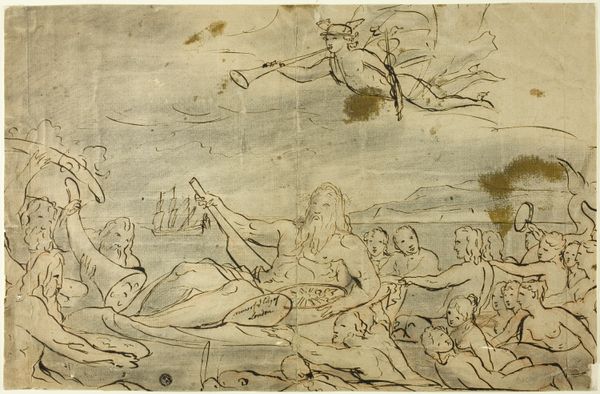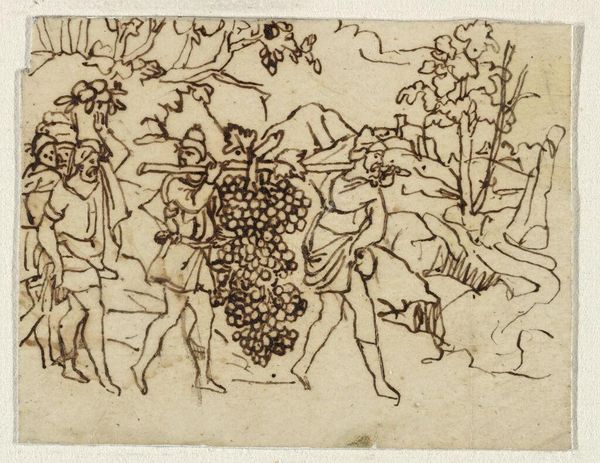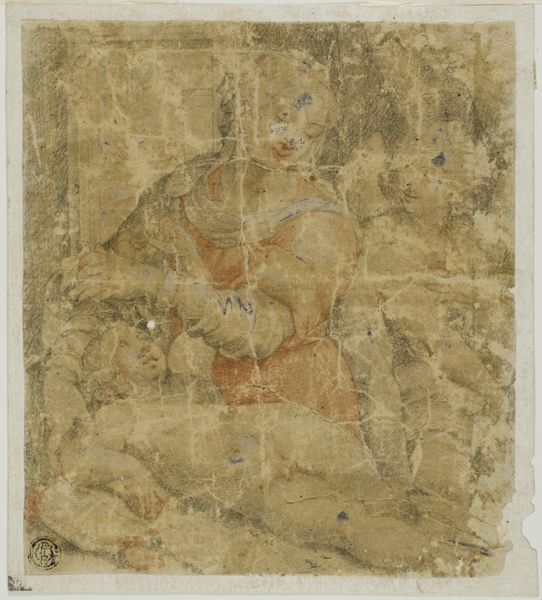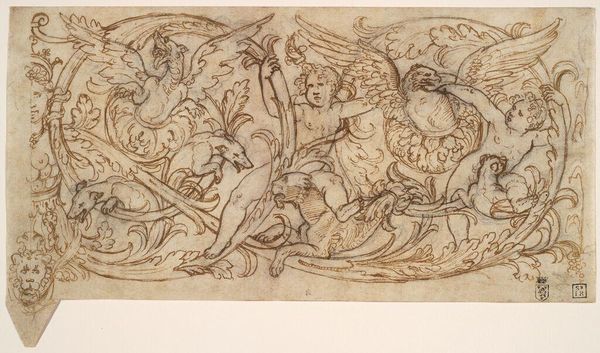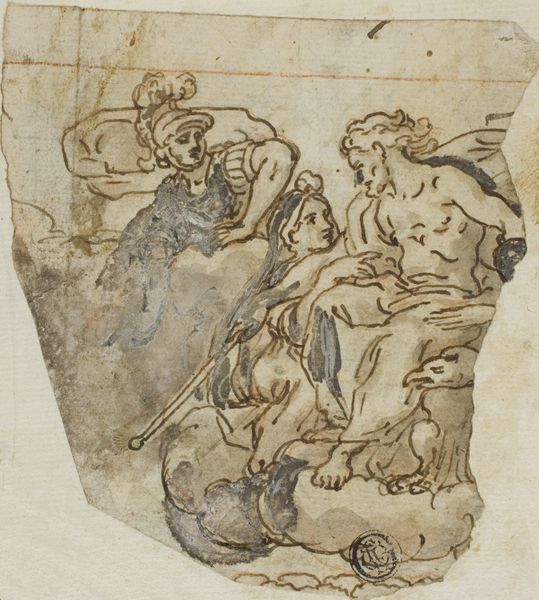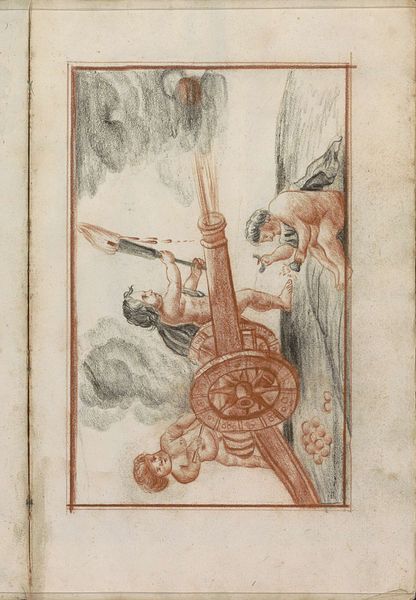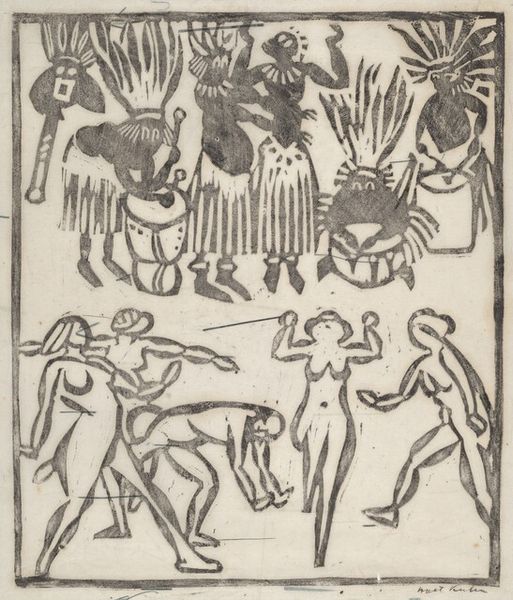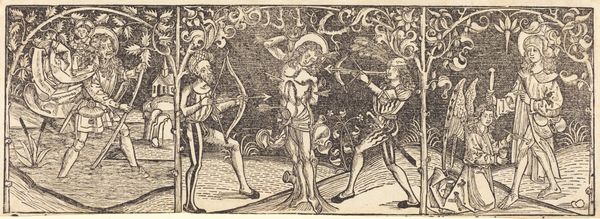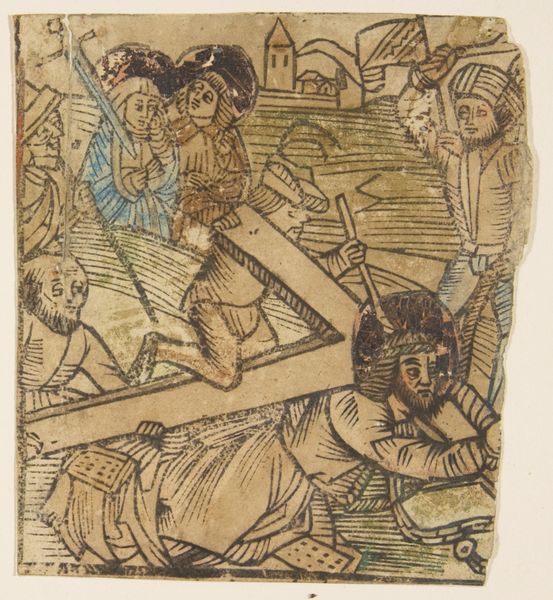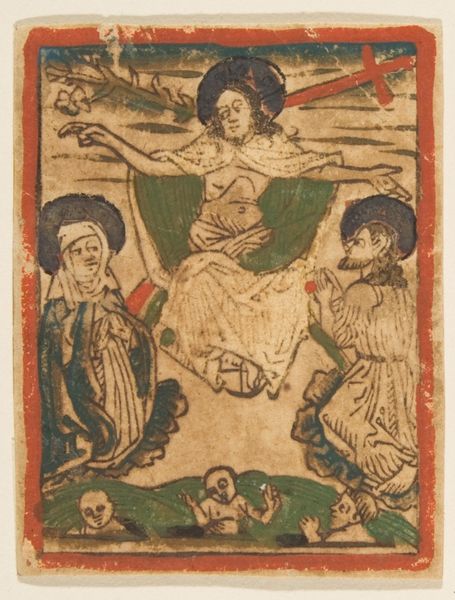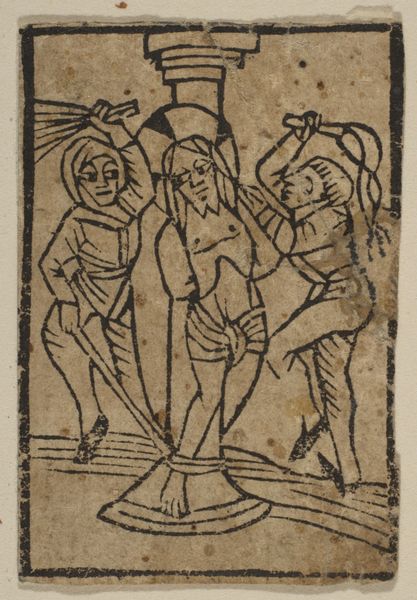
Sketch of the Mosaic Panel 'On Ice' for the Exterior Design of the Cafe near the Palace of Culture 'Chemist' in Dniprodzerzhynsk (now Kamianske) 1971
0:00
0:00
mosaic, mixed-media
#
mosaic
#
mixed-media
#
soviet-nonconformist-art
#
figuration
#
coloured pencil
#
genre-painting
#
mixed medium
#
mixed media
Copyright: Valerii Lamakh,Fair Use
Curator: This mixed-media piece is Valerii Lamakh’s 1971 “Sketch of the Mosaic Panel ‘On Ice’ for the Exterior Design of the Cafe near the Palace of Culture ‘Chemist’ in Dniprodzerzhynsk,” now known as Kamianske. Editor: What immediately strikes me is its fragility. You see the cracks in the paper support; it's so at odds with the implied scale of an exterior architectural mosaic. It almost feels archaeological, like a fragment of something lost. Curator: The depiction of skaters definitely embodies a particular Soviet-era ideal. Note the almost athletic grace of these women. Consider the symbolism of the frozen surface itself – ice as a space of both freedom and control, mirroring social dynamics. Editor: It's intriguing how this design bridges public art and everyday life; meant for a cafe near a cultural hub. Look at the labor involved – these painstaking pencil lines, simulating the tesserae of a mosaic. There's such care put into something intended to adorn a public space, which speaks volumes. Curator: Yes, the attention to detail directs the viewer. Note also how their attire is emphasized, from their colorful costumes to their precisely rendered skates, inviting reflections on idealized female roles and societal expectations of grace and skill. Editor: The colors, too – the predominantly blues and muted earth tones – are reminiscent of encaustic painting. The sketch itself is evidence of a deeply skilled application and design process, particularly if you consider the likely large size of the eventual mosaic itself. Curator: It seems to evoke both aspiration and conformity, highlighting the careful construction of national identity through leisure and public art. And it encapsulates collective memory through a dynamic, joyful representation. Editor: The fact that we are looking at a preliminary sketch only intensifies this feeling. It underscores the labor inherent in every stage of its realization. A material reminder of the transition from planning to manufacturing to an urban landscape. Curator: Ultimately, I find myself drawn back to those very fine details of each skaters' pose. To me, they echo a deep-seated collective memory of the epoch, and resilience found through simple, fleeting, carefully rendered motions. Editor: Yes, it’s compelling to observe how a "simple" sketch can become imbued with this much historical meaning and speaks to the very process through which that public art came into existence. Thank you for taking the time to unpack its context.
Comments
No comments
Be the first to comment and join the conversation on the ultimate creative platform.
